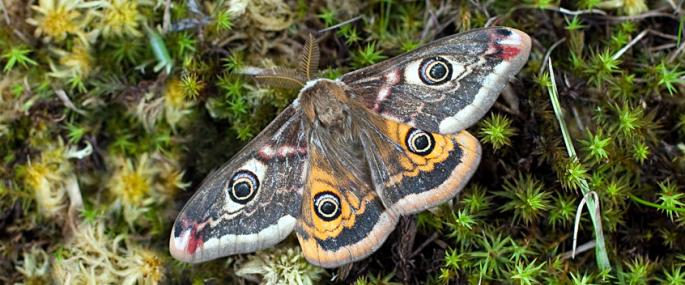The Emperor Moth is a widespread, but never very common, moth of heathland, moorland, woodland rides, sand dunes and grassland scrub. A very large moth, the female has a wingspan of up to 10cm; the male is smaller, with large feathery antennae. During the day, males can be seen flying swiftly about and can be mistaken for butterflies. The females rest in low vegetation during the day, releasing a special scent to attract males. The caterpillars feed on woody plants such as heather, Bramble and Blackthorn, and overwinter as chrysalides, sometimes for two winters.
The Wildlife Trusts manage many heathland, grassland and coastal habitats sympathetically for the benefit of all kinds of moths, including the Emperor Moth. We are also working closely with farmers, landowners and developers to promote wildlife-friendly practices. We have a vision of a 'Living Landscape': a network of habitats and wildlife corridors across town and country, which are good for both wildlife and people. You can support this greener vision for the future by joining your local Wildlife Trust.
